홍콩은 세계 어느 도시보다 고층빌딩이 많은 도시지만, 60년전만 해도 많은 호랑이들이 인근의 숲속에서 서식하는 원시림이었었다. 그당시의 홍콩 모습이 쉽게 상상이 되지 않는다. 정말 그랬을까? 이제는 홍콩관광가는것도 옛날얘기로, 기억속에서만 있는 상상의 도시로 남을것 같은 아쉬움이 뇌리속에서 떠나지 않는다.
1929년에 2명의 중국농부가 잡초와 숲으로 뒤덮힌 홍콩의 비싼 외곽지역의 거리를 한가롭게 걸어가고 있는데, 영국경찰관들에 의해 걸음을 멈추게 됐었다. 그들은 범죄를 저지른것도 아니고 다만 우리에 갇혀있는 호랑이를 운반하고 있었다. " 새로운 영토에서 당시에 우리안에 살아있는 호랑이를 운반하는것을 본다는것을 아주 드문일로 경찰관들은 이호랑이를 어떻게 어디서 붙잡았는지가 궁금 했었던 것이다."라고 그해 10월 28일자 Hong Kong Telegraph 지가 신문의 헤드라인으로 보도 했었다.
이보다 2일 앞서, 그지역의 주민들은 그들의 마을로 부터 약 400야드(365미터)떨어진곳에서 사슴을 잡기위해,설치해놓은 trap이 없어진것을 알았었다. 마을 주민들은 발자국을 따라 추적했었는데, 그발자국은 옆의 웅덩이로 이어졌었고, 그안에서 주민들은 부상당한 호랑이를 발견했는데, 호랑이의 발하나가 덫에 걸려있는것을 발견하고 깜짝 놀랐었다.
경찰은 그호랑이를 홍콩의 공원 놀이터로 보냈는데, 그곳에서 며칠 있다가 호랑이는 죽은 것이다. 당시의 신문보도에 따르면, 경찰관 한명은 "자랑스럽게 호랑이 가죽을 소유하게 됐었다"라고. 홍콩에서 호랑이에 대한 책을 연구하고있던 신문기자 Saeki씨에 의하면, "그 호랑이 이야기는 한번도 들어보지 못했던 당시 그곳 주민들이 얼마나 많은 호랑이들을 노획했었던가를 알수있는, 동화속의 얘기처럼 신비스러움을 느끼게 해주는것이었다"라고.
1900년대 초에 동물학자 또는 그곳 주민들은 야생의 호랑이들이, 계속되고 사고발생에도 불구하고, 홍콩에 야생의 호랑이들이 존재했었다는것에 많은 의아심을 품고 있었다고 한다.
Saeki씨는 1920년대부터 최근 1960년대까지 사이에 호랑이 서식처와 살쾡이들에 대해, 그지방 신문들은, 수백번을 언급한것을 발견했는데, 그들중에는 같은 호랑이 서식처를 얘기하지만, 루머로만 전해져 오던것을 확인할 길이 없는것도 많았었다고 한다. 1911년에 홍콩의 외딴섬, Lamma에서 헤엄쳐 나왔던 호랑이는 가축들을 맘껏 훔쳐 먹었었다고 한다. 1916년에만 해도 Peak Tram을 타고 통근하던 사람들은 호랑이의 울음소리에 소름을 끼쳤었다고 한다.
1937년에는 호랑이같은 살쾡이가 여인을 낚어채어 통채로 먹어치우고 흘렸던 피자국이 산자락을 적셨었다고 한다. 1914년에는 Peak 지역 근처에 살았던 대법원장, Sir William Rees-Davies집에서 불과 10야드 떨어진 곳에서 호랑이 발자국이 발견된후, 지방신문은 다음과 같이 보도했었다.( local newspaper wrote). "그는 쉽게 믿어지지않는, 호랑이가 집근처에 출현했었던 얘기들을 수도없이 만나는 사람들에게 전해 주었었다. 그러나 오늘 아침에는 정말로 그가 한얘기들에 대해 의심할 아무것도 더이상은 없었음이 확된된것이다."라고.
한홍콩지역신문은 1929년에 어떻게 홍콩시내에서 붙잡힌 호랑이가 감금되여있는 동안에 죽게 됐었는가를 자세히 보도하고 있다.
395개의 잘 보존된 기록들이 있으나, 그기록속에는 얼마나 많은 호랑이들이 사살돼는가를 자세히 밝힌것은 없었다. 다만 한번의 공격만 있었을 뿐이었다라고 기록은 밝히고 있다. Coggins씨가 남긴 기록에 따르면, 호랑이를 만나는것은 다른 동물 즉 아시아검은곰들, 늑대들, 붉은개들 또는 야생돼지들을 만난것 보다 더 심했었다고 한다. 그리고 특히 남중국 호랑이들(South China tigers)"이 주종을 이루었다는 것이다. 몸집이 작은 시베리아호랑이 또는 벵갈 호랑이들은 아직도 중국의 일부지방에서 서식하고 있지만, 양자강 남쪽지방에서 만나는 것들은 남중국호랑이들이었다고 한다.
20세기초에 미국감리교 선교사, Harry Caldwell 씨는 기독교를 전파하기위해 중국남쪽으로 미션 여행을 떠났었는데, 그곳 주민들에게 기독교인으로 개종시키는데 심혈을 기울이면서, 호랑이 잡는법을 덤으로 가르쳤었다. 그의 기록을 적은 메모북에 의하면 1910년 4월에 "Blue Tiger"로 명명된 호랑이가 당시 16세였던 중국소년을 죽인 호랑이를 총으로 사살하면서, 호랑이 잡는 법을 가르쳐 주었었다고 한다.
"그야수를 잡는것을 본 마을 주민들 모두가 기도교인으로 개종했었다"라고 기록했다. 호랑이 사냥한것을 얘기할때, 중국인들은 미국 선교사의 총에 매료됐었던 것이다" 라고 20세기에 선교미션을 했던 Harry Caldwell 씨의 기록은 당시를 설명하고 있다.
지난 몇년 사이에 중국정부는 '남중국호랑이'를 야생으로 내보기위한 바램을 발표해오곤 했었는데, 그런 계획이 성공할 경우 복원프로그람은 세계에서 첫번째가 될것이라고 한다(world's first major tiger). 그러나 Coggins씨는 자연속으로 내보낸 그호랑이들이 서식할 가능성에 대해 매우 회의적이라고 걱저이다. 현재 약 100여마리의 '남중국호랑이'들이 중국의 여러동물원 또는 번식센터에서 사육중에 있다. 이들 대부분은 Shanghai, Luoyang 와 Henan 성에서 기르고 있는데, 같은 종자들끼리 교미해서 태어났기에 기형일 가능성이 높아 종의 번식에 치명적일수 있다는 것이다.
"2014년에 한 장소에서 호랑이 한마리를 봤는데, 뒷다리들이 심각하게 기형적으로 발육된것을 봤었다. 원래 호랑이의 발걸음이 아닌 자세였었다. 사육장의 한 매니저에게 그상황을 얘기 했더니, 그는 아마도 유전자 결함의 결과 일것이다. 그래서 야생에서의 번식 프로젝트는 진행되지 못했었다"라고 설명했었다고 Coggins씨는 전했다.
대신에 중국당국은 시베리아호랑이 종자를 보존하기위한 방법에 더 많은 노력을 쏟아 부었었다. 현재 시베리아 호랑이는 현재 전세계적으로 약 500여마리만 생존해 있을 뿐이며, 러시아와 중국의 북동쪽 국경지역을 넘나들면서 서식하고 있다. 그종류의 호랑이는 앞으로는 홍콩시내에서 어슬렁 거리는것을 발견할수는 없다는데 전문가들도 같은 생각이다. 현재 홍콩에서 호랑이를 볼수있는것은, 호랑이 가죽을 이용하여 박제한것으로, 과거의 있었던 동물정도로만 느낄뿐이다.
지금의 홍콩시내에 하늘 찌를듯이 솟아있는 마천루촌에 지금으로 부터 100여년전에는 호랑이들의 천국이었었다니....이말이 믿어지지않는것은 어찌 나뿐이겠는가. 인재의 결과로구나....
몇년전 인도 북부의 Ranthambore의 국립공원이 몇마리 안남은( 약 50마리) 호랑이의 서식처로 번식처로 인도정부에서 관리하고 있었다 설명을 Guide로 부터 들었던 기억이 뚜렸하다.
They weren't committing a crime: they were carrying a caged tiger.
Two
days earlier, the men realized a deer trap they had set 400 yards (365
meters) from their village had gone missing. They followed tracks etched
in the dirt where it had been dragged to a pit -- inside, they discovered a wounded tiger, the jaws of the metal snare biting into its leg.
Police
sent the tiger to a Hong Kong amusement park, where it died shortly
after. A policeman became the "proud possessor of the skin," according
to a later news report.
"That story makes you wonder how many tigers were being carried around by locals that we never heard about"John Saeki,
journalist
"That story makes you wonder
how many tigers were being carried around by locals that we never heard
about," says John Saeki, a journalist who is researching a book about
tigers in Hong Kong.
In the early
1900s, zoologists -- and the public -- were skeptical that wild tigers
existed in Hong Kong, despite repeated incidents. Saeki has found
hundreds of mentions of tiger sightings and big cat encounters in local
newspapers, from the 1920s to as recently as the 1960s -- although some
might have been sightings of the same tiger, while others were not
verified to be more than a rumor.
There was the 1911 tiger which swam out to Hong Kong's
outlying island of Lamma
and feasted on cattle. The tiger in 1916 whose roar terrified commuters
on the Peak Tram. And the 1937 big cat who ate a woman whole, leaving
just her blood stains on the mountainside.
In
1914, after a tiger left paw prints within 10 yards of Chief Justice
Sir William Rees-Davies house, in the upscale Peak neighborhood, a
local newspaper wrote: "He had always been incredulous of tiger visit stories -- but this morning here was nothing left to doubt."
So how could tiger sightings be real when big cats didn't live in Hong Kong?
Saeki
explains that political turmoil in mainland China in the first half of
the 20th century made food harder to find for the South China tiger.
About
20,000 of the diminutive cats, the smallest of the tiger species,
roamed the mostly rural mountains of southern China during that period.
Some would slink over the border to feast on farmers' cattle and boar in
Hong Kong, before slipping back over the hills to the north --
occasionally feasting on a human, rather than an animal.
The South China tiger
The tiger is a potent symbol in
Chinese culture. In traditional Chinese medicine, tiger-penis soup has
for centuries been consumed by men to increase sexual virility.
Tiger-bone wine is believed to cure rheumatism, weakness, or paralysis.
And tiger whiskers were once used for toothaches, eyeballs for epilepsy
-- the list goes on.
The white
tiger is one of the four sacred animals of the Chinese constellation.
And those born in the year of the tiger are thought to be brave, strong,
and sympathetic.
But on a practical level, these majestic big cats have for centuries preyed on humans in China.
More
than 10,000 people were killed or injured by tigers in four provinces
of South China -- Fujian, Jiangxi, Hunan, and Guangdong -- between the
years 48 A.D. to 1953, according to gazetteer records in the Ancient
Books Collection at Fujian Normal University, analyzed by Chris Coggins
in his 2003 book "The Tiger and the Pangolin: Nature, Culture and
Conservation in China."
He
says that figure is conservative because 395 records did not specify
the numbers of casualties -- just that at least one attack had occurred.
Tiger encounters featured more regularly in records than
those by Asiatic black bears, wolves, red dogs, or wild boar, Coggins
writes, and were predominantly South China tigers. Small numbers of
Siberian and Bengal tigers still live in other pockets of China, but it
was the South China tiger that encountered humans south of the Yangtze
River.
In the early 20th century,
when American Methodist Harry Caldwell turned up in southern China on a
mission to spread Christianity, he chanced on a near-foolproof way to
convert villagers into Christians -- he taught them how to kill tigers.
In his memoir "Blue Tiger," Caldwell describes how, in April 1910, he
shot dead a big cat that had just killed a 16-year-old Chinese boy. "The
killing of that beast turned almost an entire village Christian," he
wrote. The Chinese, as he tells it, were fascinated by his American gun.
"The killing of that beast turned almost an entire village Christian."Harry Caldwell,
20th century missionary
Any God that made such a machine, he convinced them, was one they should worship.
In
his book, Caldwell tells of villages under siege from big cats across
southern China. Fuqing, a coastal community in Fujian province, was the
heart of South China tiger country. In this village -- which is now a
city -- Caldwell describes how every person bolted their gate at night,
and protectively brought their precious cattle, pigs and water buffalo
into the inner courtyards of their homes, petrified of nightly tiger
attacks.
"Men tending their herds
or walking along the trails disappeared, or were found mangled and half
eaten. Crops were going untended; paralysis began to settle on the hills
... People were afraid to stir from their houses," wrote Harry's son,
John Caldwell, in a 1953 book about his father's life.
Harry
Caldwell boasted of killing nearly 50 of the South China tigers that
had stalked a vast area south of the Yangtze River for centuries, as he
pushed religion with his rifle.
Caldwell's
tiger hunting went unchecked, as did that of British trophy hunters
such as William Lord Smith, who recounted his tales in the 1920 book
"The Cave Tiger of China."
While
men with guns hunted cats, the locals continued to encroach on the
animals' natural habitat, coming into conflict with them and eating
their traditional prey, as political turmoil drove people farther into
the countryside. As a result, the population of the South China tiger
dwindled from about 20,000 in 1905 to just
4,000 by early 1950s.
When
the Communist Party of China came to power in 1949, things didn't get
better, with Chairman Mao Zedong taking aim at animals deemed to be
pests such as tigers, says Saeki. "There was a concerted campaign to
wipe them out," he adds.
Coggins
writes that animals that attacked livestock, ate crops, or spread
disease were seen as an obstacle to progress. "Large livestock
predators, such as tigers (which have a colorful history of dining on
people in southern China) and wolves, were attacked systematically.
Animals that posed a threat to grain crops were trapped, shot, and
poisoned by the thousands," Coggins writes.
From
the 1940s onwards, Saeki says, the number of tiger sightings in Hong
Kong rocketed, as the big cats -- which thought nothing of walking 20
miles (32 kilometers) in a day -- trekked further afield to find food.
Tigers in Hong Kong
While
today Hong Kong has more skyscrapers than nearly anywhere else in the
world, in 1900 it was an agricultural landscape of wild mountains home
to
just 280,000 people.
As the city urbanized throughout the 20th century, tiger stories became a
fanciful distraction from the tumult of two world wars, and then the
huge influx of migrants who poured over the border from mainland China.
But
two big cat tales, in particular, have lingered in the public
imagination -- perhaps because the stuffed bodies of both their
protagonists have been displayed in the city.
The first story involves a tiger from 1915.
When
Hong Kong villagers told colonial police officers they had seen a tiger
on the loose in Sheung Shui, near the border with mainland China, the
British dismissed the sightings, putting it down to "the Chinese propensity for exaggeration," notes a South China Morning Post newspaper report from the time.
Then a villager died -- and the police took their claims seriously.
"Animals that posed a threat to grain crops were trapped, shot, and poisoned by the thousands."Chris Coggins,
author
Ernest
Goucher, a 21-year-old police officer from Nottingham, England, was
dispatched to investigate, along with his Indian colleague, Constable
Ruttan Singh. The two were attacked by the huge tiger -- Singh died
immediately, while Groucher was taken to hospital, "terribly lacerated
about the loins," according to media reports. He died soon after.
When
Assistant Superintendent of Police, Donald Burlingham, finally shot
dead the animal on March 9, 1915, it measured just over 7 feet (2.2
meters) from the tip of its nose to the end of its tail, was about 3
feet (1 meter) high and its paws were 6 inches (15 centimeters) across.
It weighed 288 pounds (131 kilograms).
When the dead cat was exhibited in Hong Kong City
Hall the day after it had been shot, thousands of people lined up to
see it. Today, its stuffed head is on display at the city's Police
Museum.
The other tale is of a big cat, whose skin hangs in the Tin Hau Temple in Stanley, on the belly of Hong Kong Island.
In 1942, when the city
was occupied by Japan during
World War II,
this tiger began terrorizing prisoners and guards outside the Stanley
Internment Camp, where thousands of non-Chinese prisoners were held.
For weeks, it prowled the grounds at night, roaring at internees.
George
Wright-Nooth, a prisoner at the camp, wrote in his diary: "Last night
Langston and Dalziel, who were sleeping outside at the back of the
bungalow, were woken up at about 5.00 a.m. by snarls and growls."
At first the prisoners wrote the tiger off as a "
preposterous tale."
"Langston
... got up to have a look. He went to the edge of the garden and looked
down the slope to the wire fence. There Dalziel saw him leap in the air
and fly back into the boiler room shouting 'There's a tiger down
there.'"
Within the camp,
Wright-Nooth wrote, "none of the bungalows has any doors or windows" --
the open camp was largely self-governed by the foreign prisoners, and
fortified by high fences and soldiers with guns to prevent their escape.
Eventually,
an Indian police officer shot the tiger. One of the internees, a
butcher before the war, was taken out of the camp to skin the animal,
which was then stuffed and displayed in the city.
"The
meat was not wasted either," Wright-Nooth wrote. "Some officials of the
Hong Kong Race Club were recently given the rare treat of having a
feast of tiger meat.
"The meat, which was as tender and delicious as beef, was from the tiger shot at Stanley."
No chance today
In
the post-war years, tiger sightings in Hong Kong became less frequent,
with news reports in the late 1950s chronicling sightings that were
never confirmed.
In
1965, a schoolgirl reported seeing a tiger on Tai Mo Shan, Hong Kong's
highest peak, but with no tell-tale paw prints, mangled cattle or
photograph of the big cat, its existence was never confirmed.
The dwindling number of sightings was perhaps not unsurprising -- tiger numbers in mainland China were dangerously low.
"They
killed a lot of South China tigers in the 50s," says Saeki. "Then by
the 70s they realized they were about to lose one of the best, great
species of China. And there was a kind of a panicked attempt to bring
them back but it hasn't really happened."
In
1977, the year after Mao's death, the Chinese government outlawed the
killing of tigers. In the following reform era, authorities hired
specialists to investigate the status of the subspecies. Experts
declared the South China tiger was on the verge of extinction, with just
30 to 50 of the animals believed to remain in wildly disparate pockets
of their mountainous habitat -- and therefore, unlikely to breed, writes
Coggins.
Their efforts came too late. Today, the species is believed to be
extinct
outside captivity, according to the World Wildlife Fund -- there have
been no sightings in the wild for more than 25 years. Camera traps that
have been laced across South China have failed to reveal wild tigers.
The government has, in recent years, spoken of its desire to reintroduce South China tigers to the wild in what
would be the world's first major tiger reintroduction program.
But Coggins is skeptical a return to their natural habitat is even possible. There are about
100 South China tigers in captivity, mostly kept in Chinese zoos and breeding centers. Those at zoos in
Shanghai, Luoyang and Henan province have been bred from a very small pool and have genetic deformities.
"I
saw a tiger in one facility in about 2014 that had severely deformed
rear leg hind legs. It couldn't even walk normally," says Coggins. "I
talked to one of the managers, who said it's probably a genetic defect.
So that project has not really gone forward."
Instead,
Beijing is putting more attention into its conservation efforts for the
Siberian tiger -- of which there are fewer than 500 left in the world,
and which roam across the border from Russia, into China's far
northeast.
That tiger, experts
agree, is unlikely to ever find a need to wander down to Hong Kong,
where tiger sightings are now limited to the stuffed and skinned animals
of a bygone species.

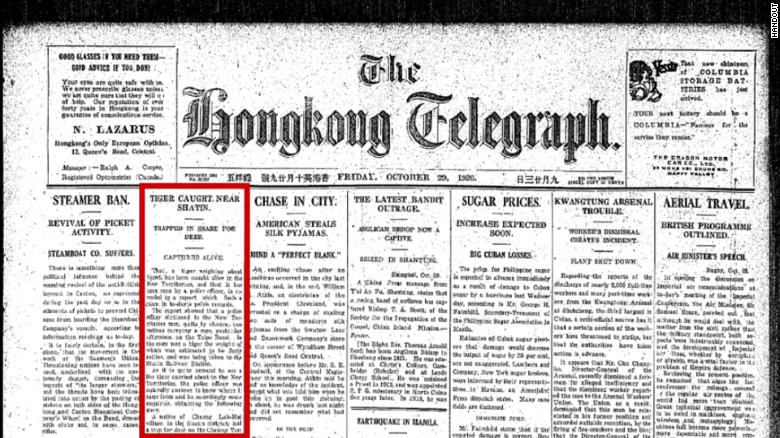
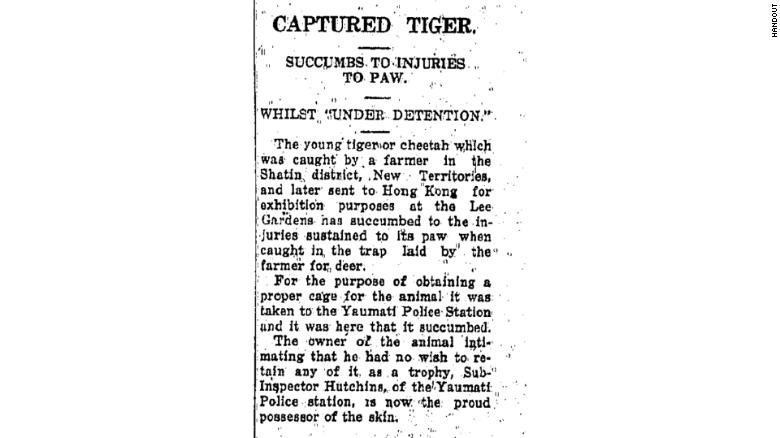

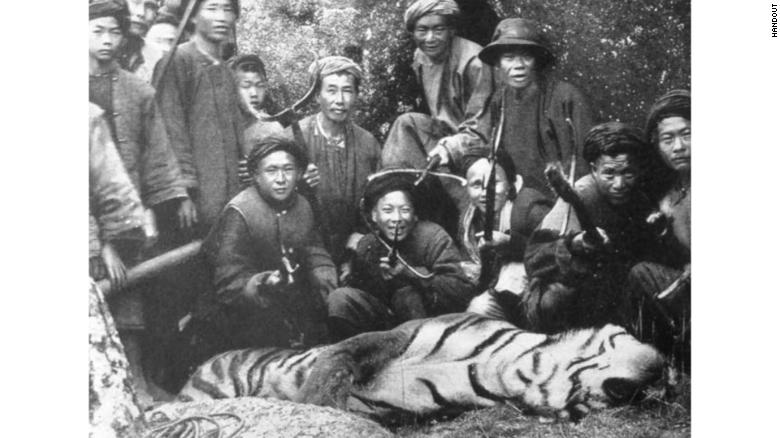

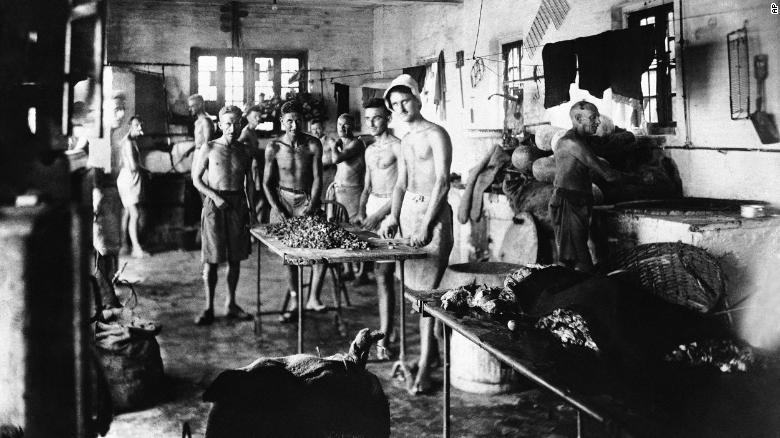
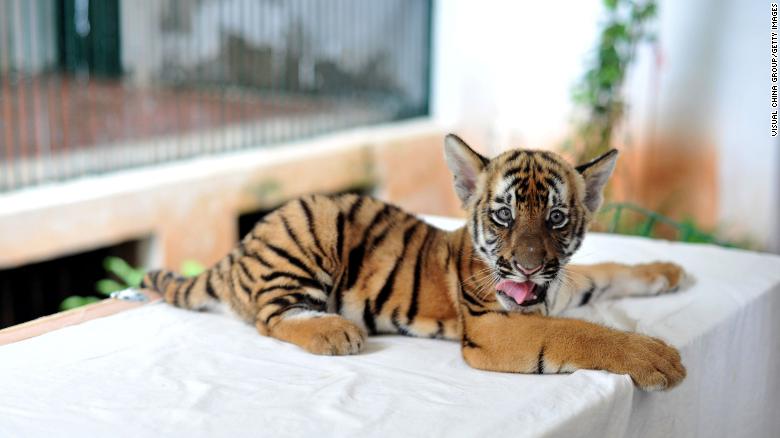
No comments:
Post a Comment